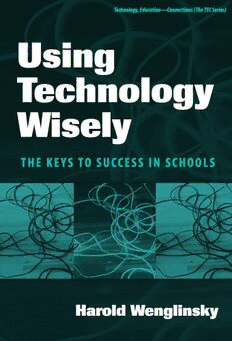
Using Technology Wisely: The Keys To Success In Schools (Technology, Education-Connection) PDF
113 Pages·2005·0.554 MB·English
Most books are stored in the elastic cloud where traffic is expensive. For this reason, we have a limit on daily download.
Preview Using Technology Wisely: The Keys To Success In Schools (Technology, Education-Connection)
Description:
In this book, for the first time, national data is used to measure technology?’s effectiveness on student academic performance in three subjects?—mathematics, science, and reading. To uncover key implications for policy and practice, the author links the test scores of more than 40,000 students who took the National Assessment of Educational Progress with reports by their teachers of various aspects of technology use. Features: * The use of real data to show which practices are most prevalent and which are most effective in the K?–12 classroom. * A nontechnical presentation of the results of the only studies to relate aspects of technology use to student test scores. * Case studies of traditionalist and constructivist uses of technology to determine which approach raises test scores the most, with and without technology. * A summary with implications of what can be learned from the numbers, including suggestions for policymakers and practitioners.
See more
The list of books you might like
Most books are stored in the elastic cloud where traffic is expensive. For this reason, we have a limit on daily download.
